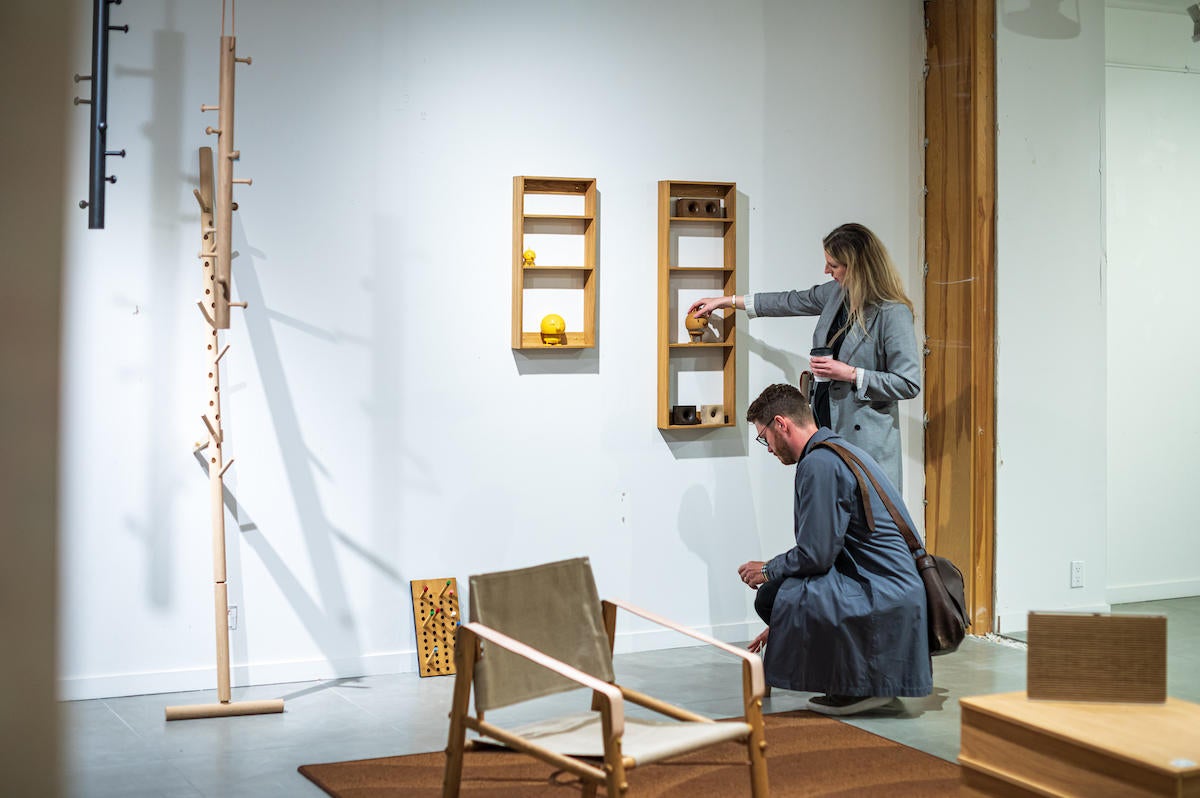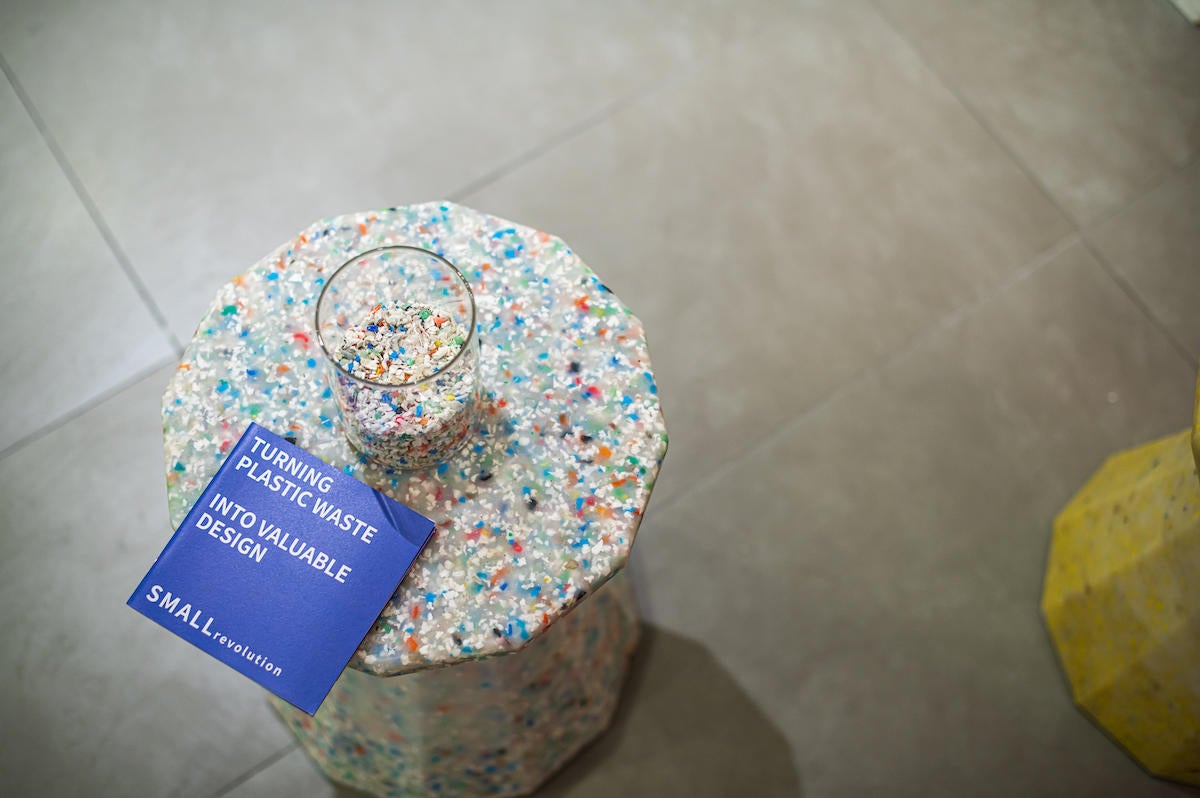“Sustainability”: easy to embrace, hard to define. Studies consistently show that consumers want to buy from sustainable companies, but what that means can vary wildly. Sometimes, it’s a carbon-neutral manufacturing process. Others, it’s nontoxic materials, or even ethical labor practices. Breaking down this broad umbrella term into clear-cut concepts is a first step toward a more sustainable future.
One of the most challenging—and potentially impactful—is “circularity,” or the idea that products should be designed with an end-of-use plan to keep them out of landfills. Proponents of a circular economy envision a world in which donation and resale would be common protocol, and product packaging would be made from biodegradable materials like mycelium. “Throwing out” a used item would come to mean returning it to its manufacturer, who would then harvest the usable pieces to create new products.
To inch us closer to that future, every year since 2019 a group of experts has convened in New York for a spring conference called Circular City Week. Last week’s edition—a hybrid of in-person and virtual panels—drew 350 experts to discuss circularity in a variety of industries. According to founder and director Tone Søndergaard, home is well poised to embrace the concept.

Unlike “tough-to-circularize industries,” as Søndergaard calls them, the design world deals with technologically straightforward hardware. Furniture isn’t made with plastics that are challenging to recycle or with the complex materials used, for example, in car batteries and computer hard drives. The relative simplicity of furniture production, too, offers more opportunity to shift the manufacturing process in a circular direction.
That doesn’t mean circularity will be easy to adopt in the home industry, but it does open the door for experimentation. On one panel, experts discussed realistic strategies for implementing circularity in product design, like “designing for disassembly.” Phantila Phataraprasit, CEO of direct-to-consumer furniture brand Sabai, discussed her company’s partial repair program. If a product is damaged in only one spot—say, on the arm of a sofa—Sabai’s designs allow for just that part to be replaced, as opposed to wasting the entire sofa.
Minneapolis-based retailer Room & Board has committed to a similar initiative, according to director of sustainability Emily McGarvey, who spoke on the same panel. McGarvey also emphasized the importance of using recycled materials to reduce waste, citing Room & Board’s Urban Wood Project, which sources supplies from deconstructed buildings or trees removed from cities due to safety concerns. The raw wood is repurposed into coffee tables and end tables, said McGarvey, and so far the initiative has diverted “thousands of pounds of material” from landfills.
Susan Inglis, founder of the Sustainable Furnishings Council, spoke on another panel about ways to measure a company’s circularity. To highlight the importance of using untainted materials, she stressed the damage of toxic fabrics in furniture design. “It is impossible to recycle textiles, for instance, that have been coated with harmful chemicals,” said Inglis. “These chemicals are not only compromising health and wellness but also impeding circularity and increasing waste.”
As a consumer-driven industry, the home design world faces fast-growing pressure from customers who are looking to furnish with the future in mind. “We are starting to realize that there is a cost to all of these goods,” says Søndergaard of the increasing demand for sustainable items. “It’s a no-brainer [for consumers]. It’s an absolute must to know how [a brand’s] furnishings were produced.”
This is especially true, says interior architect and environmental advocate Laurence Carr, of younger generations, who will have to live with the impact of today’s decisions. “They are so savvy, and they know so much. They only will relate to brands that have that transparency, that commitment,” says Carr of her younger clientele. She’s also seen a mindset shift in older patrons influenced by their millennial and Gen Z children and grandchildren.
In response, home brands have become far more vocal about their sustainability practices, and Søndergaard has been happily surprised to see action from companies in the space. In recent years, everyone from Ikea to Coyuchi has been experimenting with ways to incorporate circularity into their businesses—and if the wave of sustainability hires is any indication, we’re only going to see more of it going forward.

Circularity asks a lot of manufacturers, but interior designers carry significant responsibility, too. As trusted sources for all things stylistic, designers are in an excellent position to push for the change. To speak authoritatively on the topic requires a certain amount of education, but according to Carr, it’s easy to find informative coverage online. The Healthy Materials Lab, an ongoing interdisciplinary study, offers events, classes and ample educational resources, while the Sustainable Furnishings Council website also lists retailers, manufacturers and designers that are committed to the cause—to name just two of several open-access resources. “The more you understand, the more you can actually explain how all of that is very important to the health of your interiors,” says Carr.
Even if designers personally advocate for circularity, however, it won’t happen without the support of willing and eager clients. Carr explicitly markets her firm on principles of sustainability and wellness, so she naturally attracts green-minded clients. But introducing these concepts doesn’t have to necessitate a brand overhaul for all designers. For Carr, it starts with meaningful educational conversations with her clients about recycled furniture and long-term durability. She aims to evolve the understanding of how sustainable action can affect everyday lives. “The health of the planet and the health of the people are inextricably linked,” she says.
Søndergaard hopes designers start viewing themselves as “pioneers,” taking an active stance in what clients they want to attract. Eco-conscious consumers will flock to those who prioritize their environmental impact, she predicts, so long as they are “brave enough to dare to stand out and be a voice of what they want to see happening in the industry.”
Homepage image: ©Lightfield Studios/Adobe Stock




























